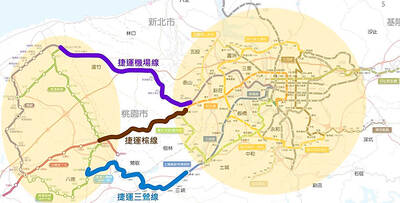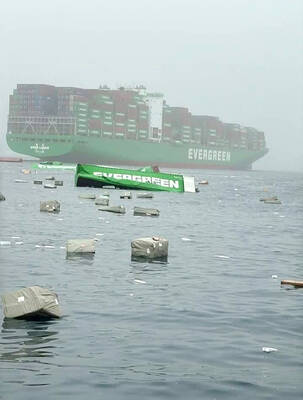Secretary-general of the Taiwan Aboriginal Society, Isak Afo, yesterday questioned the government’s slow progress in actualizing Aboriginal autonomy. However, President Ma Ying-jeou (馬英九), said that rebuilding infrastructure in Aboriginal regions, rather than autonomy, should take priority.
“Just by looking at the Council of Indigenous Peoples’ [CIP] policy agenda for the next year, it really worries us, the Aboriginal rights activists, that the government’s Aboriginal policy seems to be under the guideline of ‘welfare colonialism,’” Isak told a conference on Aboriginal policies organized by the Taiwan Indigenous Survival and Development Association in Taipei. “If this is true, the government is certainly breaking President Ma’s campaign promise.”
While Ma promised to inaugurate Aboriginal autonomy “on a trial basis,” the CIP’s policy agenda has been focused on repairing infrastructure damaged by natural disasters, giving out more scholarships for Aboriginal students and increasing the Aboriginal emergency assistance fund, Isak said.

PHOTO: CHIEN JUNG-FONG, TAIPEI TIMES
Chinese Nationalist Party (KMT) Legislator Kung Wen-chi (孔文吉), who also attended the conference, disagreed.
He said that “what Aborigines need is not to join the UN or autonomy — they want repairs for roads and bridges in their disaster-devastated areas.”
Located mostly in high mountains, Aboriginal communities have been more vulnerable to natural disasters than other areas for a long time.
Typhoons, earthquakes and heavy rainfall have damaged roads, bridges, schools and homes. In some cases, mudslides have wiped out entire villages.
Often communities are hit by new disasters before they are even able to recover from previous ones.
Ma, who was invited to deliver his remarks, echoed Kung’s view.
“I visited Lishan [梨山] once last year,” Ma said. “Although our fellow Aboriginal compatriots grow beautiful high-altitude fruits and vegetables there, they complained to me that they had no way to truck their produce to market because the Central Cross-Island Highway has long remained damaged.”
A section of the Central Cross-Island Highway — connecting Taichung County and Hualien County — was damaged by the 921 Earthquake in 1999.
Out of the consideration that restoring the highway would cause damage to the local ecosystem, the former Democratic Progressive Party administration decided against repairing the road.
The decision was overturned after the KMT took over the government in May.
“This example shows that the very survival of many Aborigines is threatened because of damaged infrastructure, and thus we should make repairing infrastructure our priority,” Ma said. “While autonomy is too big an issue, we should take time to do more research and carefully make a plan before putting it in place.”

The Executive Yuan yesterday approved a southwestern extension of the Sanying MRT Line from New Taipei to Bade District (八德) in Taoyuan, with a goal of starting construction by late 2026. The 4.03-kilometer extension, featuring three new stations, will run from the current terminus at Yingtao Fude Station (LB12) in New Taipei City to Dannan Station (LB14), where it will connect with Taoyuan’s Green Line, New Taipei City Metro Corp said in a statement. This extension will follow the completion of core Sanying Line, a 14.29-kilometer medium-capacity system linking Tucheng (土城), Sansia (三峽)

CARGO LOSS: About 50 containers at the stern of the ‘Ever Lunar’ cargo ship went overboard, prompting the temporary closure of the port and disrupting operations Evergreen Marine Corp, Taiwan’s largest container shipper, yesterday said that all crew members aboard the Ever Lunar (長月) were safe after dozens of containers fell overboard off the coast of Peru the previous day. The incident occurred at 9:40am on Friday as the Ever Lunar was anchored and waiting to enter the Port of Callao when it suddenly experienced severe rolling, Evergreen said in a statement. The rolling, which caused the containers to fall, might have been caused by factors including a tsunami triggered by an earthquake in Russia, poor winter sea conditions in South America or a sudden influx of waves,

The Ministry of Culture yesterday officially launched the “We TAIWAN” cultural program on Osaka’s Nakanoshima sandbank, with the program’s mascot receiving overwhelming popularity. The cultural program, which runs from Aug. 2 to 20, was designed to partner with and capitalize on the 2025 World Expo that is being held in Osaka, Japan, from April 13 to Oct. 13, the ministry said. On the first day of the cultural program, its mascot, a green creature named “a-We,” proved to be extremely popular, as its merch was immediately in high demand. Long lines formed yesterday for the opening

The Taipei Summer Festival is to begin tomorrow at Dadaocheng Wharf (大稻埕), featuring four themed firework shows and five live music performances throughout the month, the Taipei Department of Information and Tourism said today. The festival in the city’s Datong District (大同) is to run until Aug. 30, holding firework displays on Wednesdays and the final Saturday of the event. The first show is scheduled for tomorrow, followed by Aug. 13, 20 and 30. To celebrate the 30th anniversary of Disney Pixar's movie Toy Story, the festival has partnered with Walt Disney Co (Taiwan) to host a special themed area on